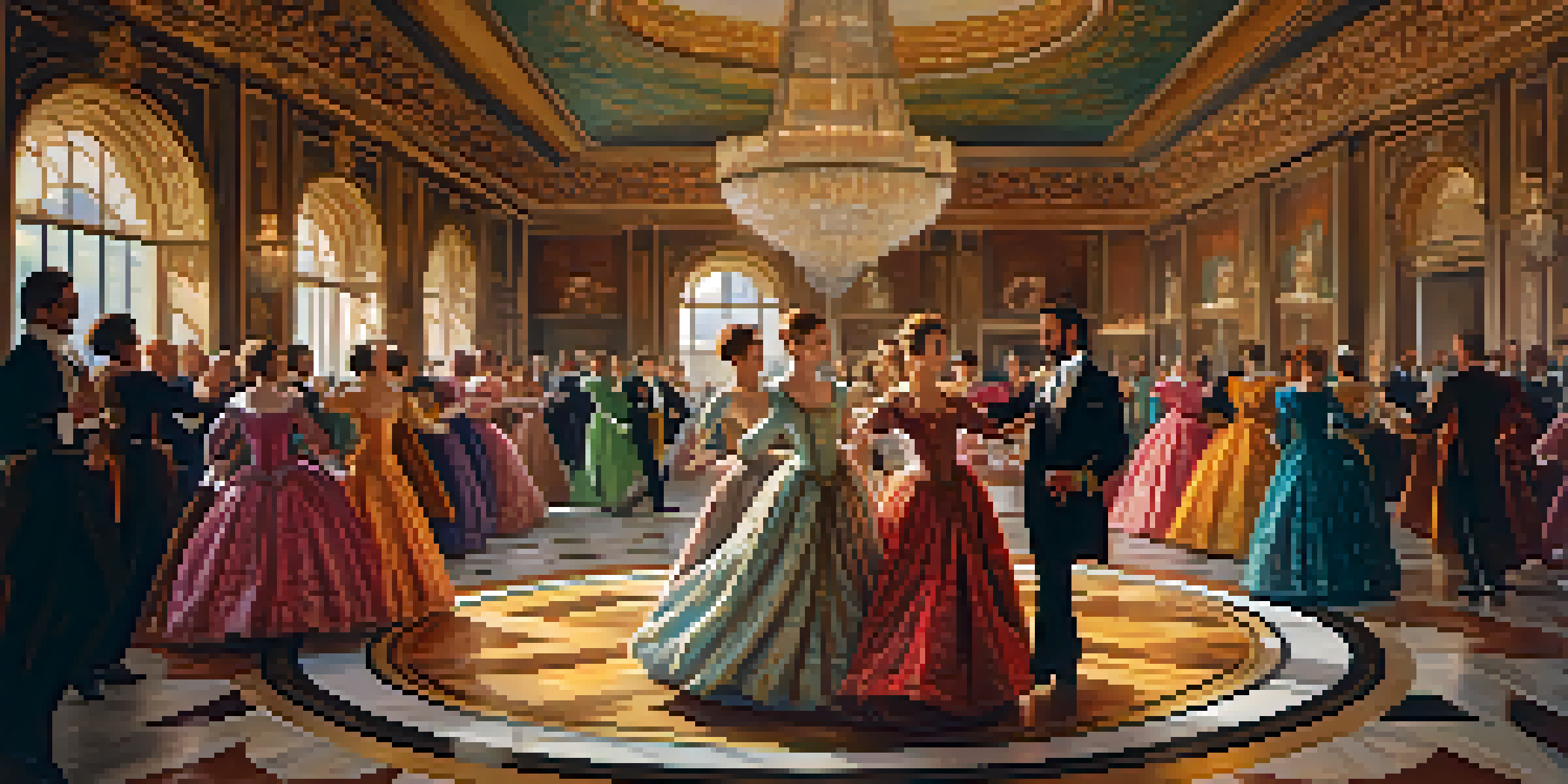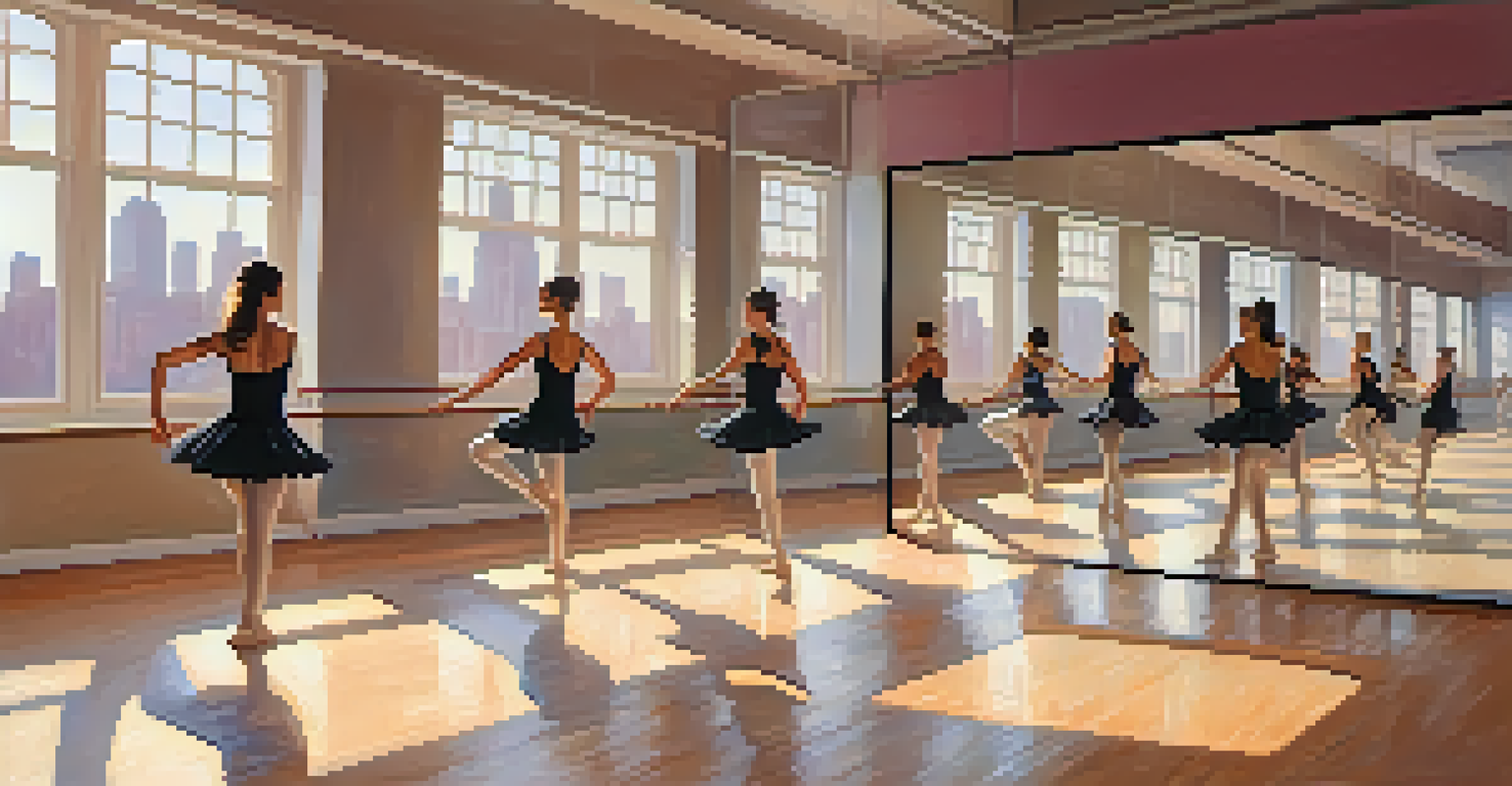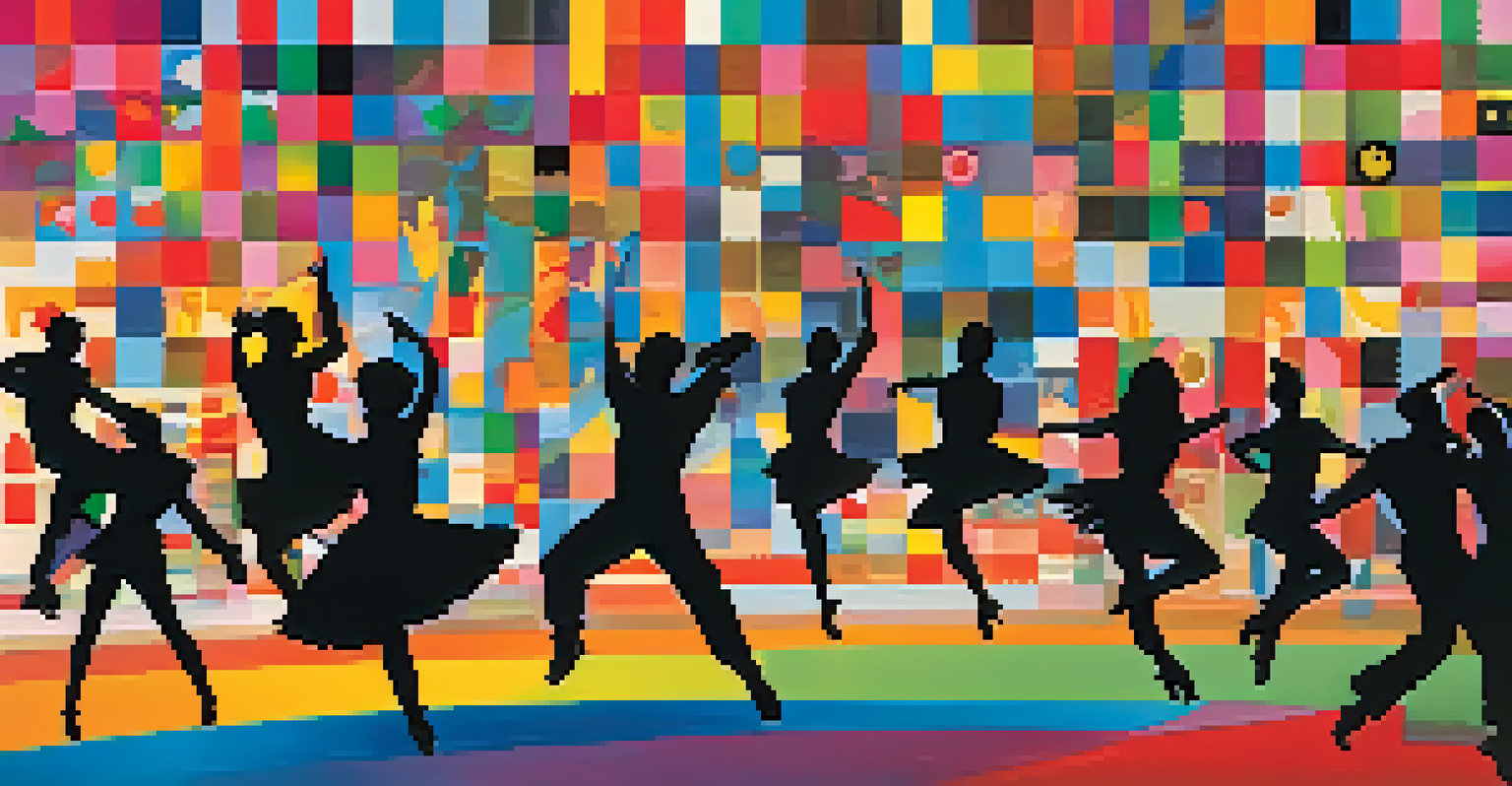Historical Perspectives on Dance Criticism: A Timeline

The Origins of Dance Criticism in Ancient Cultures
Dance has been a part of human expression for thousands of years, with early records tracing back to ancient Egypt and Greece. In these cultures, dance was often intertwined with religious ceremonies and societal rituals, serving as a form of storytelling. Criticism, in this context, was not formalized but rather based on community reception and the cultural significance of performance.
Dance is the hidden language of the soul.
As these early dances were performed, observers would express their appreciation or disapproval, often reflecting the values and norms of their society. For instance, Greek philosophers like Plato and Aristotle discussed the role of dance in education and morality, laying foundational thoughts about the art form's impact on culture. This initial phase of criticism emphasized the philosophical and societal implications of dance rather than technical aspects.
Overall, the origins of dance criticism were deeply rooted in cultural and social contexts, highlighting how this art form was perceived as vital to communal identity. The lack of formal critique allowed for a more fluid understanding of dance, setting the stage for future developments in the art of evaluating movement.
The Renaissance: Dance as a Courtly Art
During the Renaissance, dance flourished within royal courts, becoming a symbol of status and refinement. This period saw the emergence of more structured dance forms and choreography, leading to the need for more critical assessment. Dance manuals began to appear, written by prominent figures, which outlined not just the steps but also the aesthetics and intentions behind performances.

Critics and scholars began to analyze dance in terms of its technical execution and its ability to convey emotion and narrative. For example, the work of Thoinot Arbeau, who published 'Orchesography' in 1589, provided a detailed look at dance patterns and etiquette, marking one of the first instances where dance was scrutinized in a more formalized manner. This shift reflected a growing interest in the artistry of dance as distinct from its social functions.
Dance Criticism's Cultural Roots
Early dance criticism was deeply intertwined with cultural and societal values, focusing more on community perception than formal evaluation.
As dance became a pivotal part of courtly life, criticism began to emphasize not only the performance quality but also the cultural implications of dances. This transition illustrated how dance was evolving, becoming more than just a social activity; it was now an art form worthy of critique and appreciation.
The 18th Century: Enlightenment and Artistic Expression
The Age of Enlightenment brought about significant changes in the perception of art, including dance. Artists and intellectuals began to value individual expression and emotional depth, which influenced how dance was both created and critiqued. This period saw the rise of ballet as a formalized art form, with critics focusing on the technical prowess of dancers and the emotional content of performances.
The dance is a poem of which each movement is a word.
Prominent figures like Jean-Georges Noverre advocated for dance that told stories and conveyed feelings, emphasizing the importance of choreography in connecting with the audience. As a result, criticism during this time began to shift towards evaluating how effectively a dance could communicate its intended message. This evolution showcased a growing appreciation for dance as an art form rather than merely a performance.
The 18th century marked a pivotal point in dance criticism, as it began to recognize the importance of the dancer's artistry and the choreographer's vision. As dance became increasingly recognized for its expressive capabilities, the role of the critic transformed, paving the way for a more nuanced appreciation of the art.
19th Century: The Rise of Ballet and Formal Critique
The 19th century is often referred to as the Golden Age of Ballet, with the emergence of iconic figures such as Marie Taglioni and Marius Petipa. This era brought about an increase in ballet's popularity and complexity, demanding more substantial and informed critique. Critics began to emerge who specialized in ballet, providing detailed analyses of performances, choreography, and the technical abilities of dancers.
Publications like 'The New York Times' began to include dance criticism, reflecting the growing interest in ballet as a mainstream art form. Critics such as John Martin articulated the nuances of dance, evaluating not just the aesthetics but also the context surrounding performances. This formalization of criticism allowed for a more sophisticated dialogue between dancers, choreographers, and audiences.
Evolution of Dance as Art
From the Renaissance to the 18th century, dance transformed into a respected art form, prompting critics to analyze not only technique but also emotional expression.
As ballet became a focal point of cultural life, the relationship between critics and performers evolved. Critics began to influence public perception and the direction of dance, highlighting the importance of their role in shaping the narrative around this captivating art form.
The 20th Century: Modern Dance and Diverse Perspectives
The 20th century brought radical changes to dance with the emergence of modern dance, which challenged traditional forms and conventions. Pioneers like Martha Graham and Merce Cunningham pushed the boundaries, leading critics to reevaluate their approaches to dance criticism. This period was marked by a growing recognition of diverse styles, techniques, and cultural influences.
Critics began to adopt a more holistic view, considering the socio-political context of performances and the intentions of choreographers. The rise of postmodern dance further complicated this landscape, as it often defied categorization and traditional critique. Critics had to adapt their lenses, focusing on the underlying themes and the experiential aspect of performance rather than just technical execution.
This shift in the 20th century highlighted the evolving nature of dance criticism, which became a platform for voicing broader cultural conversations. Critics not only evaluated dance but also engaged with its role in society, reflecting a more inclusive and multifaceted understanding of the art form.
Contemporary Dance Criticism: Digital Age and Global Voices
In the contemporary era, dance criticism has entered the digital age, allowing for a broader reach and diverse voices in the critique landscape. Social media platforms and online publications have given rise to new critics who share their perspectives in real time, often democratizing the conversation around dance. This has led to a more inclusive dialogue, where various cultural backgrounds and experiences enrich the critique.
Contemporary critics often incorporate multimedia elements into their reviews, utilizing video clips and social media to enhance their analyses. This shift has changed how audiences engage with dance, as they can access critiques instantly and interact with critics directly. The immediacy of digital platforms has transformed the landscape of dance criticism, making it more dynamic and responsive.
Digital Age and Diverse Voices
Contemporary dance criticism has embraced digital platforms, allowing for a broader range of perspectives and a more inclusive dialogue around the art form.
Moreover, the globalization of dance has introduced a plethora of styles and traditions, prompting critics to expand their frameworks. Today's critics must consider the cultural context and significance of diverse dance forms, fostering a more nuanced and rich discourse around the art. This evolution reflects the ongoing journey of dance criticism, as it adapts to the changing landscape of society and technology.
The Future of Dance Criticism: Trends and Innovations
As we look to the future, dance criticism is likely to continue evolving in response to technological advancements and societal changes. The rise of virtual reality and immersive experiences may challenge traditional forms of critique, pushing critics to explore new ways of engaging with performances. This could lead to innovative approaches that allow audiences to experience dance in more interactive and participatory ways.
Furthermore, issues of representation and inclusivity are gaining traction within the dance community, prompting critics to advocate for underrepresented voices and perspectives. This trend may encourage a more equitable dialogue, where diverse narratives are acknowledged and celebrated in critiques. The emphasis on social justice and cultural awareness will likely shape the future of dance criticism, making it more reflective of the society it serves.

Ultimately, the future of dance criticism holds great potential for growth and transformation. As dance continues to adapt and change, criticism will play a crucial role in understanding and appreciating its complexities, fostering a deeper connection between artists and audiences.